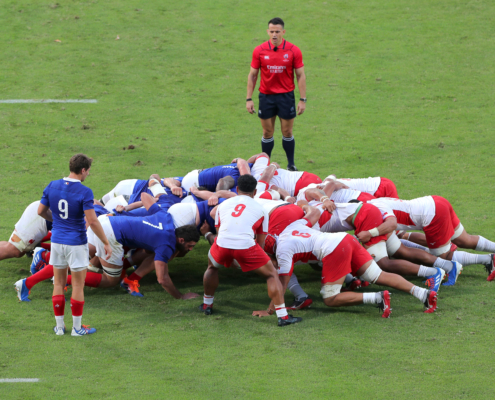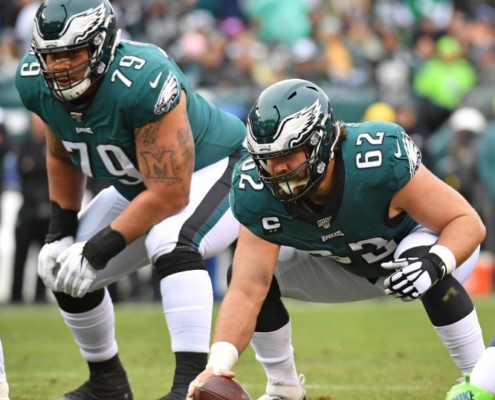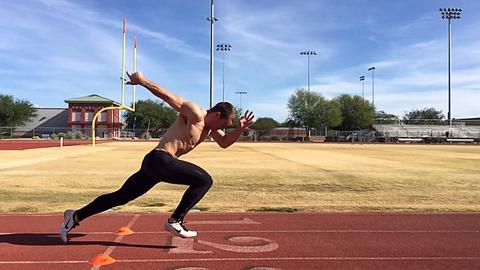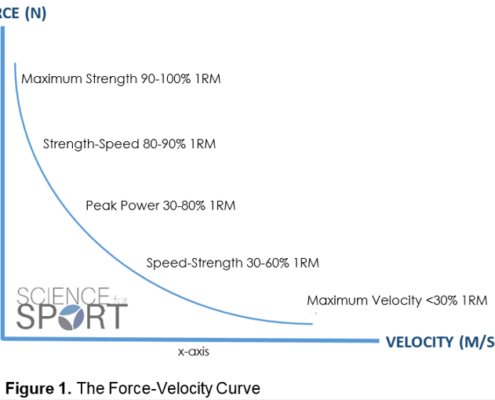How the ballistic quarter squat can support your athletic performance
With the initiation of a third lock down in the UK we thought it would be a great idea to engage our readers in some motivating posts to help keep you motivated. We welcome back APA coach Konrad McKenzie with a weekly guest post.
During Lockdown, I have tasked myself with gaining an increased knowledge of anatomy and physiology so I have greater accuracy in my prescription of exercises. By this I mean, gaining a thorough understanding of how this particular exercise can positively affect performance. Today I wanted to talk about the ballistic quarter squat. Particularly, a concentrically focused variation. People looking at athletes performing this exercise and criticising the “lack of depth” need more context.
So today, I wanted to talk about why I would like to include this exercise in my programme for field and court based sports. This blog will consist of the following sections.
- Principle of specificity
- What is the Ballistic quarter squat
- Why is it relevant?
- When to include the ballistic quarter squat
Principle of specificity in Strength training
I was digging up some old material and I found this book, which I plan to reread “Periodization Training for Sports” by Tudor Bompa. They say nothing is new, just repackaged so it seems prudent to go back over the old texts. I’ll briefly go over some of the components of specificity and give a brief summary of them. Specificity is of huge importance as the body adapts in specific ways to a recurring stress, see “SAID principle”. There is a reason you form callouses on your palm, not your face when participating in frequent weightlifting (I hope).
SAID
A common term used in the area of strength and conditioning is an acronym for “Specific adaptations to imposed demands” meaning that the body will make adaptations that will allow the body to get better at tolerating a specific form of stress that is placed upon it. Some of the variables to consider when determining an exercise’s specificity to the sporting demands include:
Joint range of movement
This refers to the joint angles regularly displayed by athletes performing the sport. For example, a tennis player preparing to initiate movement from a ready position. Or a front row rugby union player pushing in a scrum.
Bioenergetics
This refers to the energy system demands of the game for example, a game of junior tennis is predominantly an aerobic based sport with intermittent bursts of anaerobic activity. Another example would be the short sprints with high demands on the anaerobic-alactic system. Understanding energy systems will help decipher the work to rest ratios of the sport you are working in. Check out my blog on the “demands of the game” for tennis performance.
Planes of movement
Body movements occur in different planes around different axis. The three planes that you are typically taught are the frontal, transverse and sagittal plane. Field and court based sports would typically move in all the planes mentioned. For example, when hitting a groundstroke in Tennis a player will be predominantly working in the transverse plane however, when moving forward for a volley or dropshot there may be more of an emphasis in the sagittal plane. This is quite reductionist and planes of motion in sport could be an article in itself.
Muscle contraction (type and speed)
This is interesting and most recent conversations in this lockdown period, have forced me to ask how a muscle is “behaving” during a specific activity. What is the contraction type? How fast and how hard does it contract? For example isometric activity of the glute maximus in the stance phase of sprinting.
When constructing a needs analysis a coach would typically have these in mind when preparing a training programme. See my blog on Fundamentals underpinning a physical development strength program for the youth athlete.
What is the Ballistic Quarter squat?
Firstly, a ballistic method is a type of training where the athlete’s body (or object) is explosively accelerated throughout the entire movement. If we go back over our notes and look at Henneman’s size principle we know that motor units are recruited in a precise order according to their force output. It seems as though there is a superior activation of type two fibres with heavier loads as opposed to lighter ones (Henneman, 1965). Additionally, when exercises are performed in a ballistic manner they seem to have a superior potentiation effect compared to non-ballistic counterparts.
The Ballistic quarter squat is a squat variation with a heavy concentric focus. The lifter is asked to concentrically propel the barbell vertically using upper and lower limb, from a quarter squat position, as shown in the picture below.
Why is it relevant?
The Ballistic quarter squat is an exercise that I have come across recently, what was interesting to me was the “Ballistic” element of this exercise and rate of force development required to perform this exercise well. High levels of Power is the result of work divided by time, or in simpler terms, applying the highest amount of force in the shortest amount of time, significant for most field or court-based sports. With some more research I found that performing this exercise at around 90% of one repetition maximum had superior effects on sprint and vertical jump performances (Weiss, 2000). Other studies have also advocated the integration of quarter squats in a conditioning program (Rhea et al, 2016).
Possible reasons for this was again, the joint angle specificity but also the ability to overload the intensity at this joint angle. Highly trained athletes may squat 30-45% more in a partial range squat compared to a squat with full range.
Whilst this blog is not going to compare the differences between the full depth squat and quarter squat variations (readers are encouraged to read this paper if interested in that) it enables us to understand the relevance of the ballistic quarter squat.
- Joint angles
Although it is said that many explosive movements in sports are initiated from a knee angle of approximately 90° (Suchomel, et al 2015) these include sprinters in the blocks, wrestling NFL linemen etc, I would argue that knee joint angles shallower than this are also executed. Thus, if we remind ourselves of the laws of specificity, training explosive strength from these similar joint angle positions would be beneficial for performance.
- Propulsion
In order to overcome the body’s resting inertia, athletes need to be strong. How strong, is a topic for another day. But, muscles of the lower body (Glutes, Calves and quadriceps) most forcefully extend to project the body forward. If you look closely at my first picture under “What is a ballistic quarter squat” you will see the athlete forcefully extending knee hip and ankle. This extension occurs with high levels of intent and speed, although a heavy ballistic squat may not be specific to the speed of contraction, it will certainly enhance the force potential of leg musculature.
When to include the ballistic quarter squat
If we tie in the joint angle specificity, the muscle contraction type/speed, motor unit activation from heavy loads and the bioenergetics of the movement, the ballistic quartet squat seems to have a place in my exercise inventory.
Due to the reported benefits at performing this movement at 90% or 1RM it seems rational to include this in a power phase, more specifically a strength-speed phase of the annual plan.
Thanks for reading guys,
Konrad McKenzie
Strength and Conditioning coach.
Liked This Blog?
You might like other blogs on this topic from APA:
APA review of the Middlesex Students S&C conference 2014
The Dubious Rise of the Corrective Exercise ”Pseudo-Physio” Posing as a Trainer- My thoughts
as well as two recommended articles:
This article on weak Glutes during Squatting
And this one on Exercise Modifications
Do you feel that this would be a perfect time to work on the weak links that you have been avoiding? The things that you know you should be doing that you keep putting off? Would you like us to help you with movement screening and an injury prevention program? Then click on the link below and let us help you!
? TRAIN WITH APA ?
Aspiring Pro Training Support Packages
Follow me on instagram @konrad_mcken
Follow Daz on instagram @apacoachdaz
- If you’re not subscribed yet, click here to get free email updates, so we can stay in touch.
- Share this post using the buttons on the top and bottom of the post. As one of this blog’s first readers, I’m not just hoping you’ll tell your friends about it. I’m counting on it.
- Leave a comment, telling me where you’re struggling and how I can help
Since you’re here…
…we have a small favor to ask. APA aim to bring you compelling content from the world of sports science and coaching. We are devoted to making athletes fitter, faster and stronger so they can excel in sport. Please take a moment to share the articles on social media, engage the authors with questions and comments below, and link to articles when appropriate if you have a blog or participate on forums of related topics. — APA TEAM







